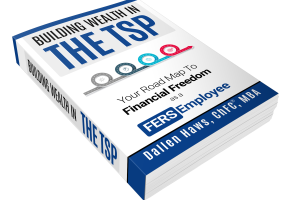The Thrift Savings Plan (TSP) offers federal employees a variety of investment options designed to meet different retirement goals and risk tolerances. Among these options, the five primary TSP funds—G, F, C, S, and I—serve as the base for many retirement portfolios. These funds range from very conservative (G and F funds) to more aggressive options (C, S, and I funds). Understanding the characteristics and returns for each of these funds is crucial for making informed investment decisions.
One of the most commonly discussed TSP funds is the C Fund, which tracks the performance of the S&P 500 Index. This fund focuses on large-cap U.S. stocks, offering a growth-oriented investment strategy. But is the TSP C Fund the best choice for all investors? To answer this question, we need to dive deeper into the characteristics of the C Fund and compare it with other TSP options.
Understanding the TSP C Fund
The TSP C Fund, as mentioned, mirrors the performance of the S&P 500 Index. As a result, the C Fund provides exposure to a broad array of established, high-performing corporations. Historically, this fund has been one of the highest-performing TSP funds over long periods.
For example, over the last 10 years, the C Fund has posted an average annual return that outpaces many other investment options, including the F and G Funds. The C Fund generally provides higher returns than more conservative funds, though it also comes with greater volatility. This means that while you might earn impressive returns in the long run, you should be prepared for fluctuations in value in the short term.
The key advantage of the C Fund is its growth potential. By investing in large-cap U.S. stocks, it offers investors the chance to capitalize on the performance of America’s leading companies. Given the overall trend of the U.S. stock market—especially in bull markets—the C Fund has proven to be an excellent choice for long-term investors who can weather short-term volatility in exchange for substantial growth over decades.
Comparing the C Fund with Other TSP Funds
Before we can determine whether the TSP C Fund is the best option, it’s important to understand how it compares to the other primary TSP funds: the G, F, S, and I Funds.
G Fund: The G Fund invests in short-term U.S. Treasury securities and is considered the most conservative TSP fund. It offers low returns but comes with the guarantee of no loss of principal. This makes it ideal for those seeking a safe, low-risk investment, especially in uncertain economic times. However, its returns tend to lag far behind the more aggressive funds like the C, S and I Funds.
F Fund: The F Fund is a bond fund that tracks the performance of the Bloomberg Barclays U.S. Aggregate Bond Index. While it offers more return potential than the G Fund, it is still considered a conservative option, focused on fixed income rather than growth. Investors in the F Fund can expect more stability than in the C Fund, but the returns are typically lower.
S Fund: The S Fund, which tracks the performance of the Dow Jones U.S. Completion Total Stock Market Index, focuses on smaller companies that are not included in the S&P 500. The S Fund is considered aggressive because it invests in mid- and small-cap stocks, which tend to have higher growth potential but also come with greater risk. The S Fund has outperformed the C Fund in certain periods, but it can also experience more significant downturns.
I Fund: The I Fund invests in international stocks, primarily from developed countries outside the U.S. While this adds diversification to a portfolio, the I Fund is subject to currency exchange risks and geopolitical uncertainties. Its long-term performance can vary based on global economic conditions, making it an excellent option for investors looking for international exposure.
Returns Over Time
Source: https://www.tsp.gov/funds-individual/
Date: 1/24/2025
As you can see, the return of the C fund has outperformed every other TSP fund in recent years. But just because it’s out-performed the other funds lately does not mean it will continue to do better than the other funds in the future.
The Role of Aggressive Funds in a Retirement Strategy
For younger, early-career employees with decades before retirement, aggressive funds like the C, S, and I Funds are a good option. The potential for higher returns far outweighs the short-term volatility, and over 30 years or more, the C Fund can help generate significant wealth.
However, if you are closer to retirement, investing completely in aggressive funds might not be the best fit. If you plan to withdraw from your investments soon, it’s important to shift your portfolio to become a little more conservative. You also don’t want to be 100% G and F fund because you want some of your money to grow in retirement. Check out this article to find a good balance for you: https://hawsfederaladvisors.com/using-the-4-rule-bucket-strategy-for-your-tsp/
Is the TSP C Fund the Best Fund for You?
The answer to whether the TSP C Fund is the best fund depends entirely on your personal financial goals, risk tolerance, and investment horizon. For younger workers with a long time until retirement, the C Fund is likely one of the best investment options for achieving strong growth over time. However, for those nearing retirement, investing a portion of your portfolio in other, more conservative funds may be a good idea.
It is also important to consider that diversification is key to managing risk. Instead of solely investing in the C Fund, consider balancing your TSP portfolio across multiple funds—C, S, I, F, and G Funds—depending on your risk profile. You may also explore the L Funds, which offer a blend of these primary funds based on your expected retirement date.
Ultimately, the best strategy is one that aligns with your individual financial needs and future goals. The TSP C Fund is an excellent choice for long-term growth, but like any investment, it should be part of a diversified and thoughtfully structured retirement plan.


